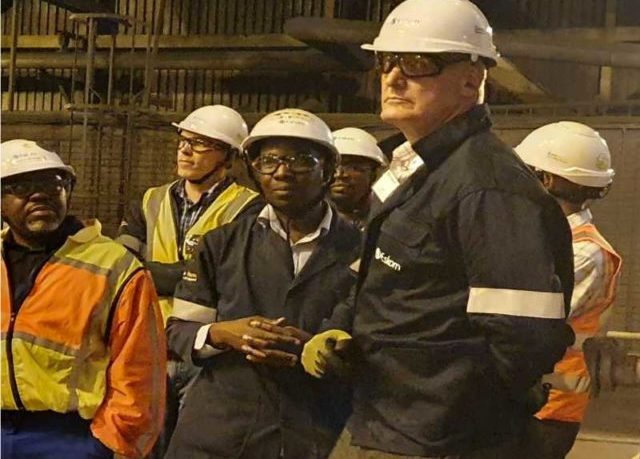- Eskom’s new CEO, André de Ruyter, has plunged into the electricity supply industry taking a visit to power stations as he sets out to improve the utility’s operational performance in the short term.
- Yesterday, the Eskom executive was taken on a tour of the Duvha Power Station, which currently has four generating units on the grid.
- The coal-fired power plant, operated by Eskom, is situated in the Mpumalanga province.
De Ruyter has promised significant changes at Eskom; however, these will only be implemented with the board’s approval. He intends to meet with the board at the end of January to put his proposals forward.
Eskom’s new CEO will use resources at his disposal
The new CEO has stated that he has no plans to bring in management consults to map a new course for the utility, reports Business Insider SA.
Eskom has what it needs in-house, says de Ruyter. These are skilled, committed people who provide a solid foundation.
“People believe in solutions that they were partners in creating, and I think that is a very important element of any turnaround process, that you want that engagement from your team members, that they truly believe that this is the art of the possible.”
Although remaining vague on his proposed plans to turn the utility around, the executive alluded to better, more disciplined maintenance of power stations, and efforts to manage electricity demand.
Employee numbers “will start to trend downwards”. Load shedding will hopefully come with unquantified “adequate notice”.
According to a CSIR report, the records of loadshedding dating back to 2007, had a total economic impact over the period of between R167 billion and R338 billion. Read more
De Ruyter acknowledged that: “One of the very important disciplines that I will be very firm on implementing in Eskom is that every plan has to have a business case.”
“And every plan has to have numbers that we can use in order to determine whether it is a worthwhile return on investment that we get for the money that we spend.”
The CSIR said that while gazetted plans to build new capacity in the country will boost supply, because of lead times – the waiting period for new capacity to come online – in a best-case scenario, the country will sit with a supply gap until 2022
Author: Nicolette Pombo-van Zyl
This article was originally published on ESI Africa and is republished with permission with minor editorial changes.











